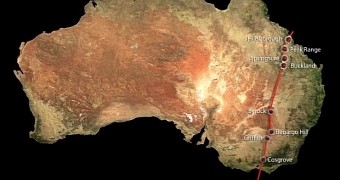A paper published in the science journal Nature this Monday, September 14, announces the discovery of the world's absolute longest continental volcanic chain.
The newly discovered geological feature is found in Australia. It runs across about 2,000 kilometers (nearly 1,250 miles), spanning from Victoria all the way to the Whitsunday Islands on the northeast coast of Queensland.
How the mammoth volcanic chain came into being
In their report in the journal Nature, researchers with the Australian National University describe this newly found continental volcanic chain in Australia as a hotspot track.
What this means is that it formed when, while moving northwards, Australia chanced to traverse a hotspot in our planet's mantle.
In geology, hotspots are regions where molten material pushes upwards from under the mantle, creating volcanoes in areas where the crust is weak enough that it can be breached.
“We realized that the same hotspot had caused volcanoes in the Whitsundays and the central Victoria region, and also some rare features in New South Wales, roughly halfway between them,” explains researcher Rhodri Davies, as cited by Phys Org.
This world's longest continental volcanic chain in Australia formed over the past 33 million years. It is much more impressive than North America's Yellowstone hotspot track.
“The track is nearly three times the length of the famous Yellowstone hotspot track on the North American continent,” adds specialist Rhodri Davies.
There is no evidence of volcanic activity in some regions
The recently identified hotspot track in Australia might be the world's longest, but the fact of the matter is that, at least in some regions, there is no sign of volcanic activity whatsoever.
Australian National University researchers go on to explain that this is because, what with the Australian continent being especially thick, volcanoes could only form in regions where the molten material encountered a surface thin enough to break through it.
More precisely, they say the hotspot only gave rise to volcanic activity in regions where the planet's solid outer layer was less than 130 kilometers (roughly 80 miles) thick.

 14 DAY TRIAL //
14 DAY TRIAL //